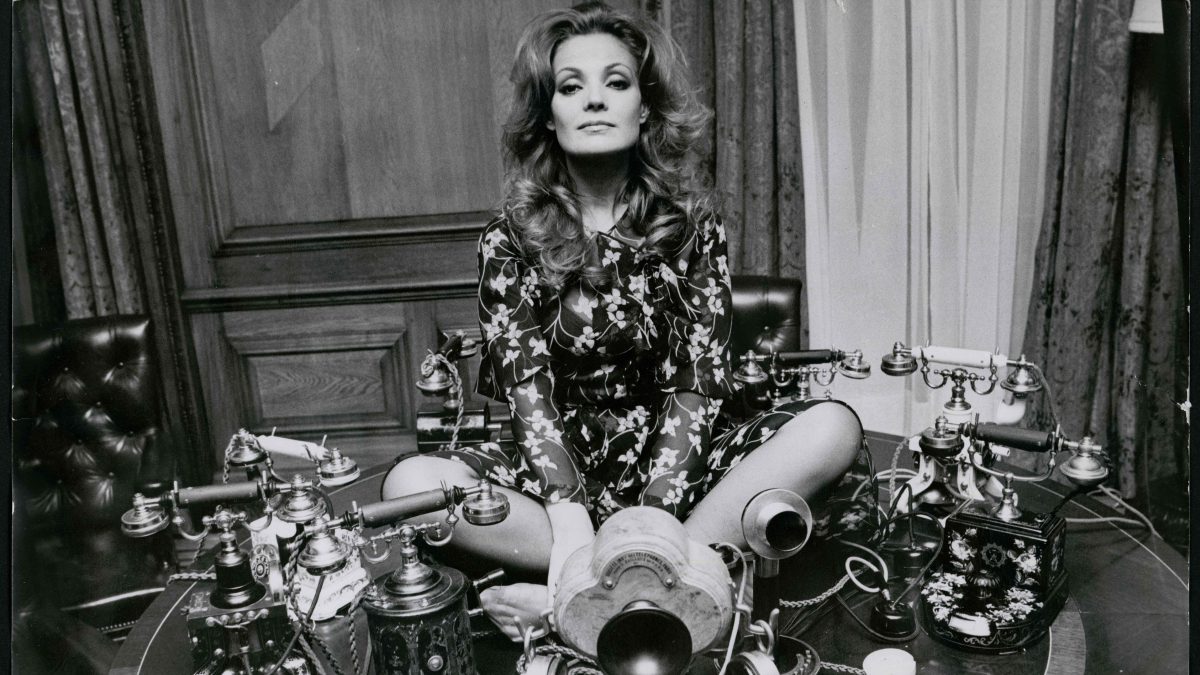This image is from the report ‘El baile de los teléfonos’ (The Dance of the Telephones) by Joana Biarnés, which was part of the historic campaign to announce the installation of the 1 millionth telephone in Madrid in December 1970.
Carmen Sevilla is surrounded by different models of telephones, including magneto telephones, the Custodia model, the Skeleton model, etc. Tell me you’re not tempted to make your own version of this photograph.
The author
Considered the first female photojournalist in Spain, her images capture a key period in the 20th century. She captured a changing society and witnessed catastrophes, sporting events and social events through her camera lens.
Joana Biarnés was born in Tarrasa in 1935. She started out in photography as an assistant to her father, who was a sports photographer. When she began accompanying him to sporting events, as a pioneer, she experienced referees stopping football matches because a woman was taking photos on the football pitches. Not to mention the unflattering nicknames she had to endure from the stands. Her father was instrumental in Joana’s decision to pursue a career in photography and shaped her personal and professional values.
She studied journalism in Barcelona and began working as a still photographer on film productions, which taught her the importance of framing images.
In September 1962, when Joana Biarnés returned to visit her family, she and her camera witnessed the terrible floods in the Vallés region. She felt the pain of photographing her surroundings, her neighbours and the devastation caused by the disaster. Today, some of those images are iconic.
A key moment in her professional career came in 1965, when she was working for the newspaper Pueblo. During the Beatles’ visit to Spain, she was the only one who managed to photograph them in their hotel room, far beyond the concert and the press conference. A woman of character and determination, she got the photo that no one else had.
She photographed numerous national artists such as Dalí, Joan Manuel Serrat, Lola Flores, Rocío Jurado, Marisol and Massiel. She even accompanied the latter to Paris, appointed by the record company, to choose her dress for the Eurovision performance. She was Raphael’s personal photographer: she followed his concerts, took the photographs for his albums, accompanied him on his visit to Russia and on most of his tours. She offered photographs with a different, more modern look than what was being done at the time. Many international artists also posed for her, including Orson Welles, Jack Lemmon, Yul Brinner and Clint Eastwood.
In the mid-1980s, after working for the newspaper and even setting up her own agency, she was unhappy with the photographic commissions she was being asked to do. They asked her for sensationalism that was not part of her vision of photojournalism. So she decided to hang up her camera and change her life. Together with her husband, she moved to Ibiza and set up a small restaurant that was frequented by many of the celebrities who had posed for her camera.
It was not until she retired and returned to Catalonia that she received the recognition she deserved. It began with an exhibition promoted by Colita (Isabel Steva Hernández) on pioneering female photographers. And especially when, in 2012, Cristóbal Castro (photojournalist) rediscovered all her work and immersed himself in her archive.
Joana attended the photography seminar in Albarracín, which was a very emotional moment. It can be considered the beginning of her third professional stage. At this point, Joana Biarnés returned to photojournalism while experiencing a degenerative process in her vision.
Joana passed away in December 2018, at the age of 83, at the height of her recognition, with contracts signed and projects in development.
Anthological exhibitions have been held and documentaries have been made about her career and life as a photographer. The Photographic Social Vision Foundation preserves the artist’s work and develops initiatives to promote it. Joana Biarnés offers a view of society in the 1960s, 70s and 80s that complements the vision of reality that had been documented until then by male photographers.
In 2019, the Joana Biarnés Scholarship for young photojournalists was launched, aimed at strengthening the professional development of future generations, in accordance with the photographer’s wishes.
Today we can say with certainty that Joana has an indispensable place in the history of photography. Thank you for being a pioneer.
